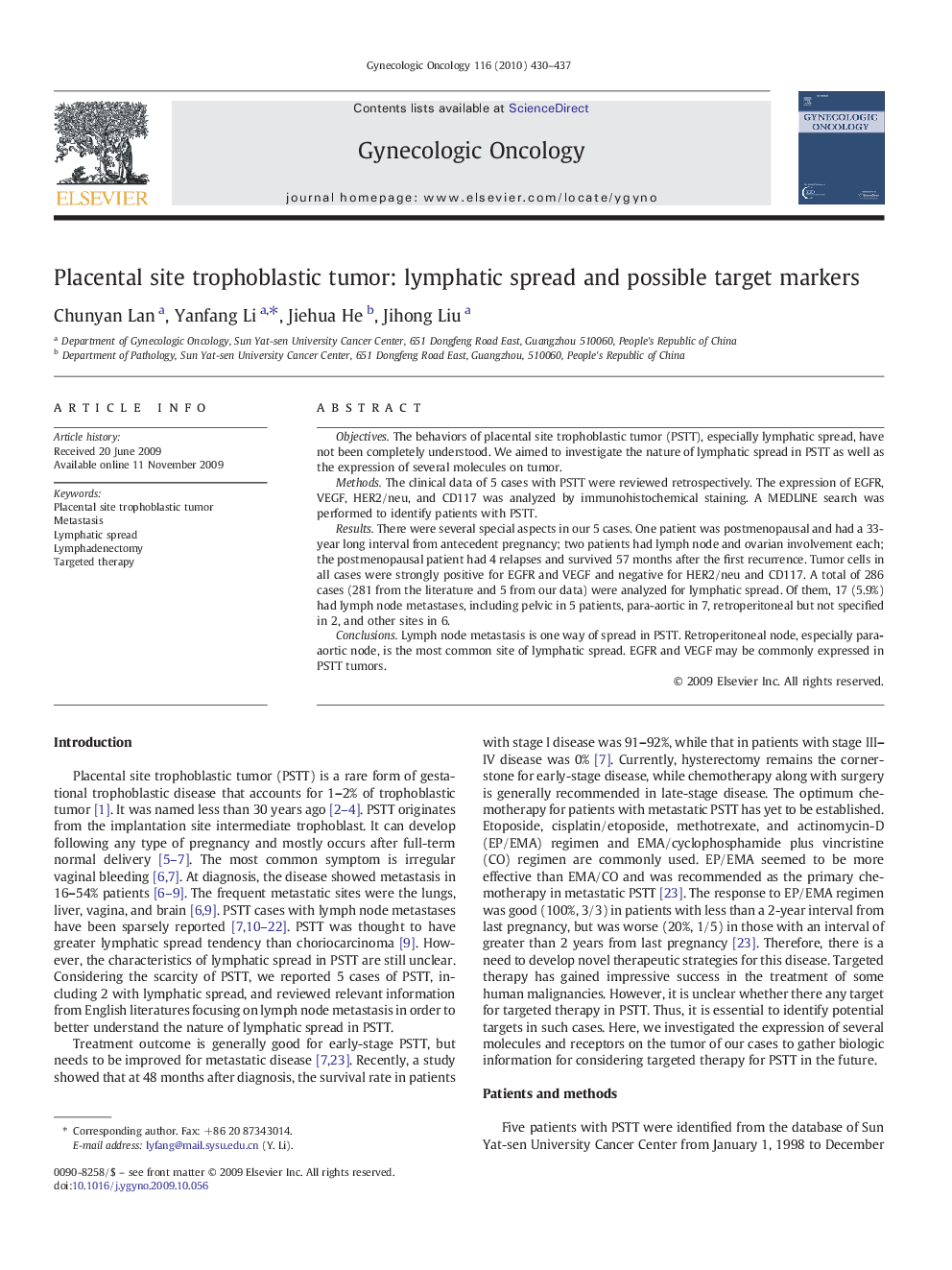| Article ID | Journal | Published Year | Pages | File Type |
|---|---|---|---|---|
| 3944176 | Gynecologic Oncology | 2010 | 8 Pages |
ObjectivesThe behaviors of placental site trophoblastic tumor (PSTT), especially lymphatic spread, have not been completely understood. We aimed to investigate the nature of lymphatic spread in PSTT as well as the expression of several molecules on tumor.MethodsThe clinical data of 5 cases with PSTT were reviewed retrospectively. The expression of EGFR, VEGF, HER2/neu, and CD117 was analyzed by immunohistochemical staining. A MEDLINE search was performed to identify patients with PSTT.ResultsThere were several special aspects in our 5 cases. One patient was postmenopausal and had a 33-year long interval from antecedent pregnancy; two patients had lymph node and ovarian involvement each; the postmenopausal patient had 4 relapses and survived 57 months after the first recurrence. Tumor cells in all cases were strongly positive for EGFR and VEGF and negative for HER2/neu and CD117. A total of 286 cases (281 from the literature and 5 from our data) were analyzed for lymphatic spread. Of them, 17 (5.9%) had lymph node metastases, including pelvic in 5 patients, para-aortic in 7, retroperitoneal but not specified in 2, and other sites in 6.ConclusionsLymph node metastasis is one way of spread in PSTT. Retroperitoneal node, especially para-aortic node, is the most common site of lymphatic spread. EGFR and VEGF may be commonly expressed in PSTT tumors.
